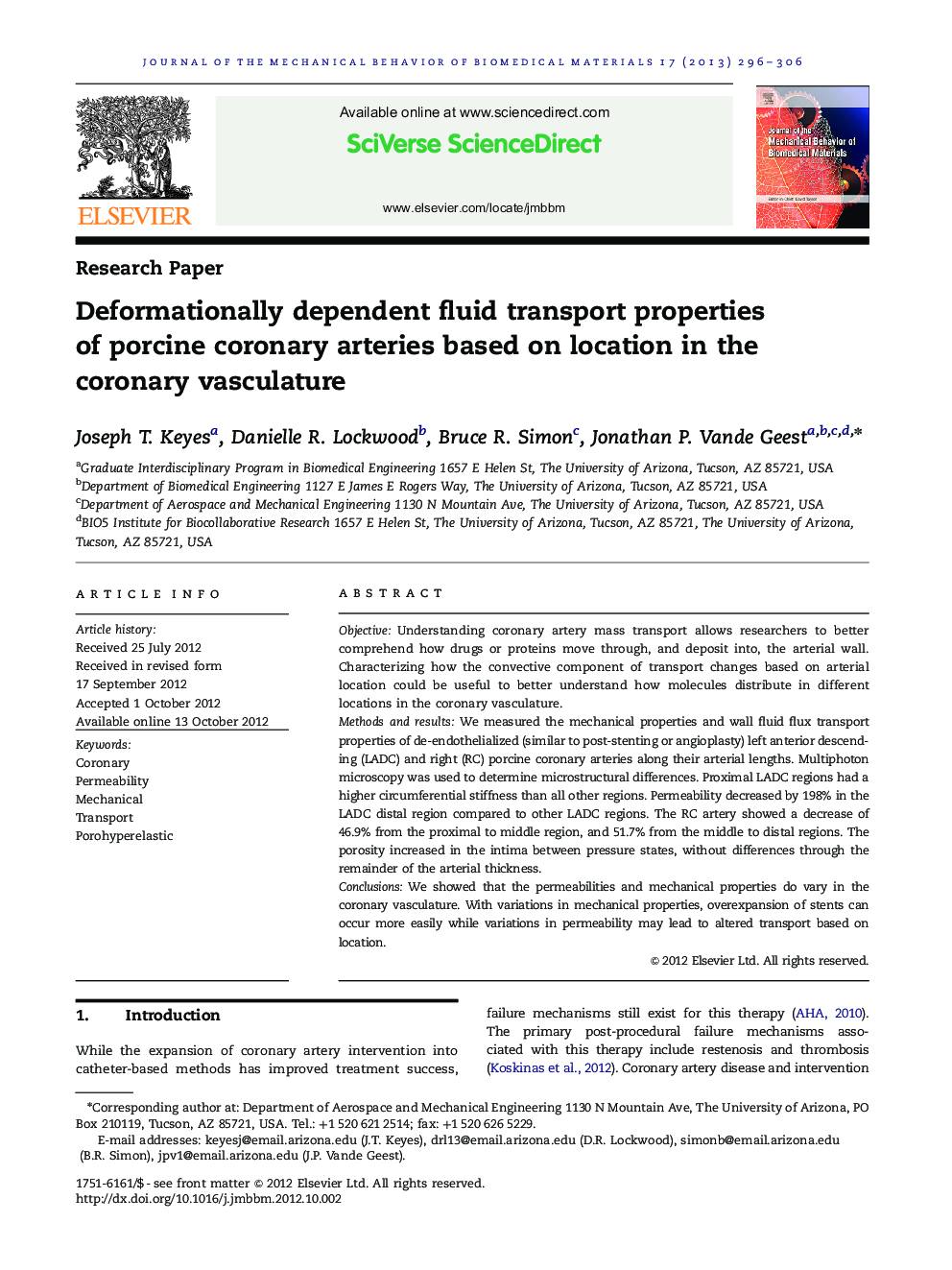| Article ID | Journal | Published Year | Pages | File Type |
|---|---|---|---|---|
| 810988 | Journal of the Mechanical Behavior of Biomedical Materials | 2013 | 11 Pages |
ObjectiveUnderstanding coronary artery mass transport allows researchers to better comprehend how drugs or proteins move through, and deposit into, the arterial wall. Characterizing how the convective component of transport changes based on arterial location could be useful to better understand how molecules distribute in different locations in the coronary vasculature.Methods and resultsWe measured the mechanical properties and wall fluid flux transport properties of de-endothelialized (similar to post-stenting or angioplasty) left anterior descending (LADC) and right (RC) porcine coronary arteries along their arterial lengths. Multiphoton microscopy was used to determine microstructural differences. Proximal LADC regions had a higher circumferential stiffness than all other regions. Permeability decreased by 198% in the LADC distal region compared to other LADC regions. The RC artery showed a decrease of 46.9% from the proximal to middle region, and 51.7% from the middle to distal regions. The porosity increased in the intima between pressure states, without differences through the remainder of the arterial thickness.ConclusionsWe showed that the permeabilities and mechanical properties do vary in the coronary vasculature. With variations in mechanical properties, overexpansion of stents can occur more easily while variations in permeability may lead to altered transport based on location.
Graphical AbstractFigure optionsDownload full-size imageDownload high-quality image (299 K)Download as PowerPoint slideHighlights► We determined how porohyperelastic properties vary between pig coronary arteries. ► Arterial regions showed differences in stiffness (LADC having higher stiffnesses). ► Arterial regions varied in the permeability, with downward trends along the length. ► Microstructure indicated that porosity through the thicknesses did not change. ► Only intimal elastin showed opening of voids under pressure.
